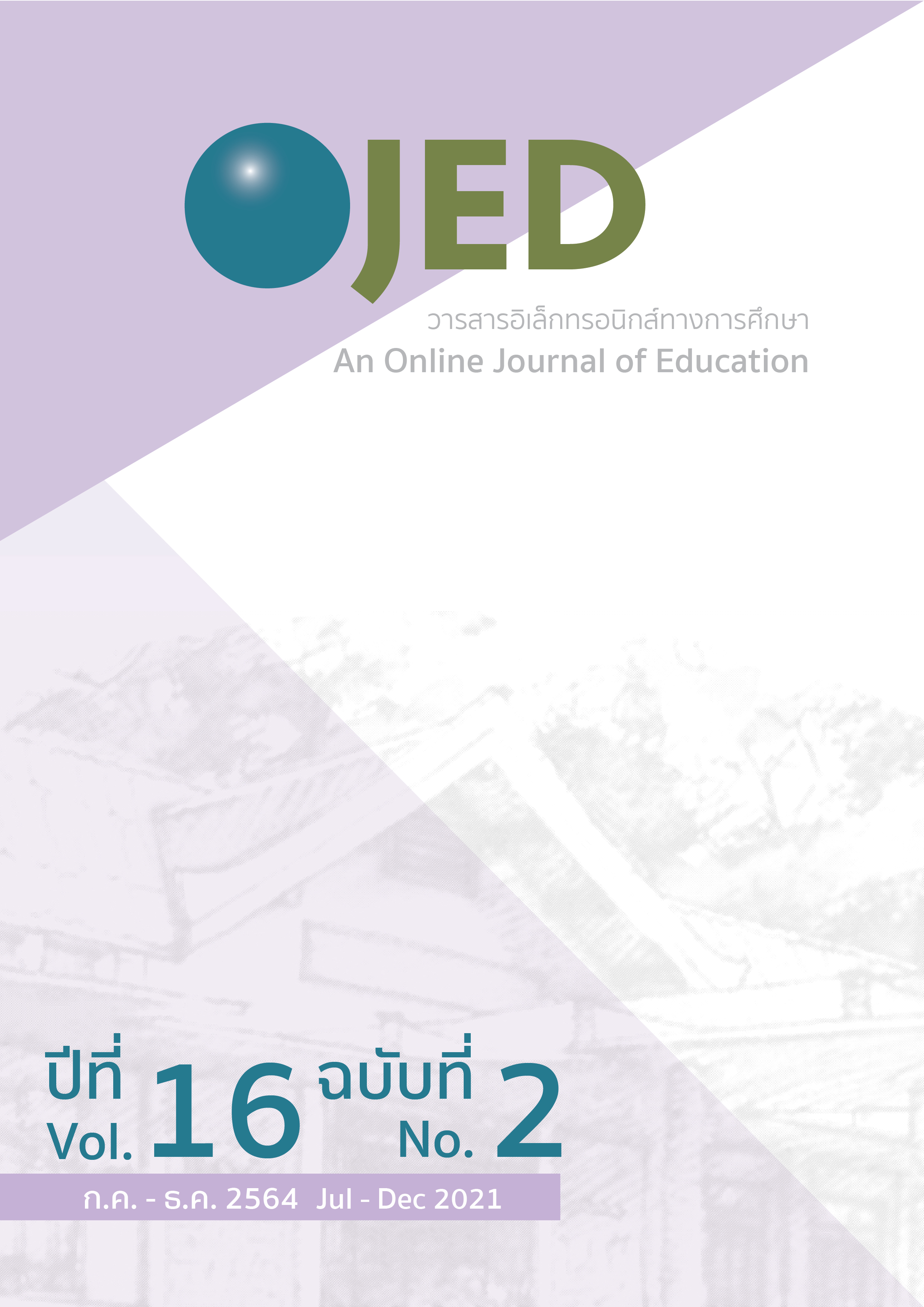Effects of Using Station Rotation Model in Blended Learning on English Speaking Ability of Thai EFL Primary School Students
DOI:
https://doi.org/10.14456/ojed.2021.64Keywords:
blended learning, station rotation, English speaking abilityAbstract
This study aimed to investigate the effects of an English instruction using station rotation model in Blended Learning on improving English speaking ability of primary school students and their attitudes towards the model. The participants were 41 fifth-grade students who were studying in the second semester of the academic year 2016 in a primary school in Sri Saket province, Thailand. They had different English ability levels. The instruments used in this study were pretest, posttest, and a questionnaire. The data were analyzed by using mean, standard deviation and t-test. The research findings were summarized as follows: 1) Participants’ English-speaking ability improved significantly. 2) Participants had positive attitudes towards the station rotation model after learning. The findings also suggest that the station rotation model can be implemented to enhance English speaking skills of EFL primary school students in Thailand. In order to implement this model to primary school students, the learner training should be clearly explained as suggested in this research. Furthermore, the effects of station rotation model in Blended Learning on other language skills should be explored in future research.
References
Bernat, E., & Gvozdenko, I. (2005, June). Beliefs about language learning: Current knowledge, pedagogical implications and new research directions. TESL-EJ, 9(1), 1-29.
Bonk, C. J., & Graham, C. R. (2006). The handbook of blended learning: Global perspectives, local designs. Pfeiffer.
Bilgin, H. (2013). Students calling: Blended language learning for students. British Council.
Burkart, G. & Sheppard, K. (2004). Content ESL across the USA: A Training Packet. National Clearinghouse for English Language Acquisition.
Chandra, V., & Fisher, D. L. (2009). Students’ perceptions of a blended web-based learning environment. Learning Environ Res Learning Environments Research, 12(1), 31-44. Chatel, R. (2002). New technology, new literacy: Creating a bridge for English language learners. The NERA Journal, 38, 45–51.
Ellis, R. (2003). Task-based language learning and teaching. Oxford University Press.
Florez, M. A. (1999). Improving Adult English Language Learners. Speaking Skills.
Ginns, P., & Ellis, R. (2007). Quality in bended learning: Exploring the relationships between on-line and face-to-face teaching and learning. The Internet and Higher Education, 10(1), 53-64.
Gonzalez, J. A. (2009). Technology and culture in the language class: Adding another ingredient to the old dilemma and a taxonomy and a database structure. AsiaCall Online Journal, 4(1), 58-66.
Guzer, B. & Caner, H. (2014). The past, present and future of blended learning: an in depth analysis of literature. Procedia, 116, 4596-4603.
Horn M. B., & Staker H. (2011). Blended: Using Disruptive Innovation to Improve Schools. Jossey-Bass.
Horn, M. B., & Staker, H. (2011). The rise of K–12 blended learning. Innosight Institute.
Jenpattarakul, W. (2012). The impact of keyword technique on the students' vocabulary retention ability in an EFL class. Mediterranean Journal of Social Sciences, 3(3), 565-573.
Johnson, D. W., & Johnson, R. T. (1998). Learning together and alone: Cooperative, competitive, and individualistic learning (5th ed.). Allyn & Bacon.
Kukulska-Hulme, A. (2010). Mobile learning as a catalyst for change. Open Learning: The Journal of Open and Distance Learning Open Learning: The J. of Open & Distance Learning COPL, 25(3), 181-185.
Leahy, S. (2006). A survey of selected teachers’ opinions to the effects of class size on student achievement among middle school students. ERIC database.
Lungu, I. (2013). The increasing need for blended-learning models in courses of
English for specific courses in romanian University. Procedia, 76, 470-475.
Nunan, D. (1999). Second Language Teaching and Learning. Heinle & Heinle Publishers.
Richards, J. C. (2006). Communicative language teaching today. Cambridge University Press.
Staker, H, & Horn, M. B. (2012). Classifying K–12 blended learning. Innosight Institute. http://www.innosightinstitute.org/innosight/wpcontent/uploads/2012/05/Classifying-K- 12-blendedlearning2.pdf
Stockwell, G., & Hubbard, P. (2013). Some emerging principles for mobile-assisted language learning. Monterey. http://www.tirfonline.org/english-in-the-workforce/mobile-assisted-language-learning
Downloads
Published
How to Cite
Issue
Section
License

This work is licensed under a Creative Commons Attribution-NonCommercial-NoDerivatives 4.0 International License.




